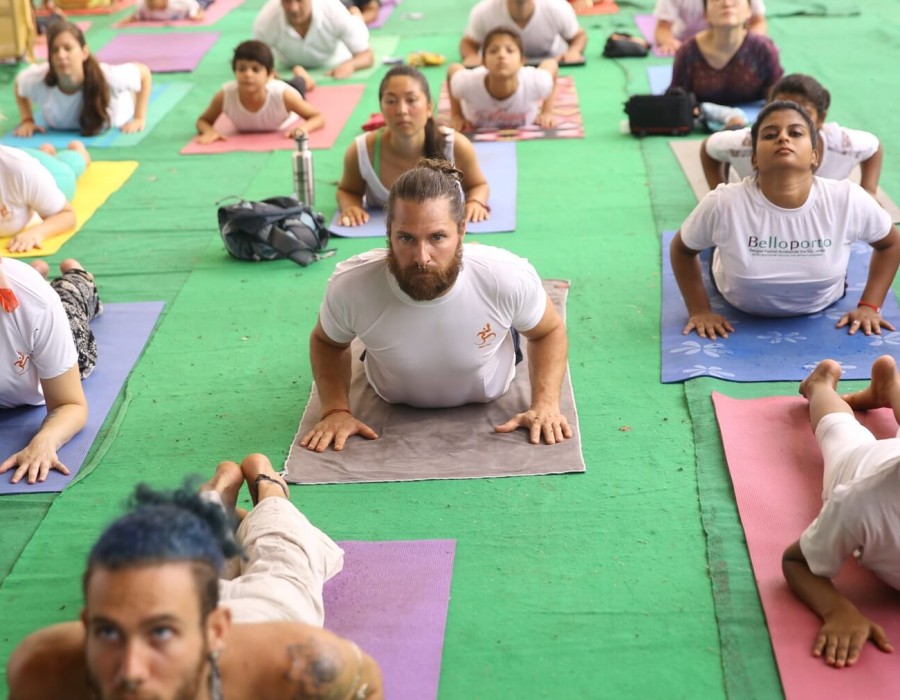When most people think about yoga, they picture physical postures and flexibility. But true yoga goes far beyond the mat. Two of the most essential—and often life-changing—aspects of a 200 Hour Yoga Teacher Training in India are Pranayama (breath control) and Meditation. These ancient practices form the foundation of the yogic journey, nurturing the body, mind, and spirit in ways that asanas alone cannot.
At Rishikul Yogshala Kerala, our approach to yoga teacher training emphasizes the deeper dimensions of yoga—where transformation begins from within.
What Is Pranayama?
Pranayama is the practice of consciously regulating the breath. The word comes from the Sanskrit terms “prana” (life force) and “ayama” (expansion or control). Through specific breathing techniques, you learn to direct your energy, calm your nervous system, and prepare your body and mind for meditation and spiritual growth.
What Is Meditation in Yoga?
Meditation, or Dhyana, is the practice of focused awareness. It helps quiet the mind, reduce stress, and connect with a deeper sense of self. In a 200 Hour Yoga Teacher Training in India, meditation is not just a technique—it's a daily practice that supports every other aspect of your learning.
Why Pranayama and Meditation Matter in a 200 Hour Yoga Teacher Training in India
1. Deepens Self-Awareness
While asana builds awareness of the body, pranayama and meditation bring attention inward. This allows trainees to become more conscious of their thoughts, emotions, and energy.
2. Supports Mental Clarity and Emotional Balance
The intense schedule of a yoga teacher training can be mentally and emotionally demanding. Pranayama techniques like Anulom Vilom, Kapalabhati, and Bhramari calm the mind and reduce anxiety, while meditation helps you stay centered and resilient.
3. Enhances Teaching Skills
A good yoga teacher is not only skilled in physical instruction but also in guiding students toward inner peace. Learning pranayama and meditation empowers you to lead more holistic classes and offer students tools for mindfulness and stress relief.
4. Improves Energy and Vitality
By regulating the breath, you learn to manage your prana (life force energy), resulting in increased vitality, improved sleep, and better focus. Meditation, meanwhile, helps conserve and refine energy rather than deplete it.
5. Connects You to the Spiritual Heart of Yoga
Yoga is ultimately a path to union—of body, mind, and spirit. Pranayama and meditation bridge the gap between the external and the internal, preparing the practitioner for higher states of consciousness and authentic living.
How Rishikul Yogshala Kerala Integrates Pranayama and Meditation
At Rishikul Yogshala Kerala, our 200 Hour Yoga Teacher Training in India is designed to offer a truly holistic experience. Each day begins with traditional pranayama and guided meditation, helping students ground their energy and set a conscious intention for practice.
Our Program Includes:
- Daily Pranayama Classes: Learn classical techniques like Nadi Shodhana, Bhastrika, and Ujjayi breathing.
- Guided Meditation Sessions: From mantra meditation to mindfulness and Yoga Nidra.
- Theory & Philosophy: Understand the purpose behind each practice through yogic texts and teachings.
- Practical Application: Learn how to incorporate pranayama and meditation into your own teaching methodology.
If you're considering a 200 Hour Yoga Teacher Training in India, make sure your program emphasizes not just postures, but also the power of the breath and stillness. At Rishikul Yogshala Kerala, we believe that pranayama and meditation are not optional extras—they are essential tools for transformation, both on and off the mat.
Whether you’re aiming to teach yoga or deepen your personal practice, these ancient techniques will elevate your training and enrich your life in countless ways.






Comments